Disclosure: We were invited to a press event and gifted tickets to the Tutankhamun: Treasures of the Golden Pharaoh exhibition. All thoughts and opinions are my own.
As a child I loved reading about Ancient Egypt, learning about pharaohs and pyramids. I remember learning about the discovery of Tutankhamun’s tomb, and the treasures found inside it. One day, I thought, I’d like to go to Egypt and see them for myself. As it turned out, I didn’t have to go all the way to Egypt after all. More than 150 artefacts from Tutankhamun’s tomb are currently on display at the Saatchi Gallery in London in the Tutankhamun: Treasures of the Golden Pharaoh exhibition and we were invited to come along and see them.
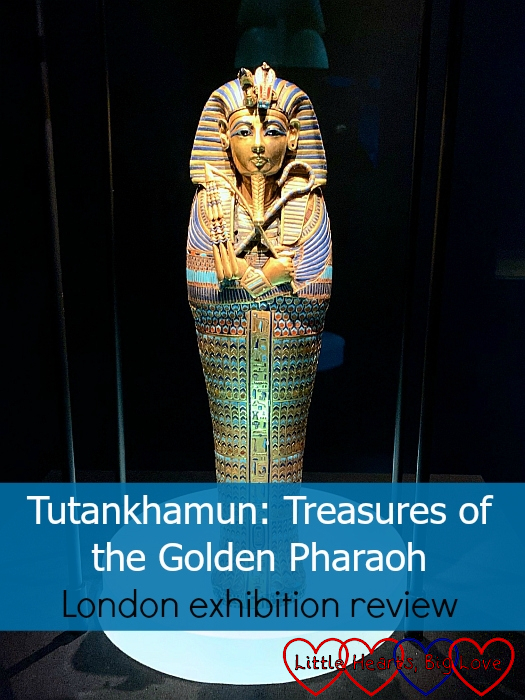
The exhibition commemorates the centenary of the discovery of Tutankhamun’s tomb by explorer Howard Carter and financier Lord Carnarvon in 1922. The tomb is the only royal Egyptian tomb to have been found intact, with over 5000 artefacts inside. Of the 150+ artefacts in the exhibition, 60 are on display for the first time outside Egypt. London is the third of ten cities who will be hosting this exhibition, which will be the last time that these artefacts can be seen outside Egypt. Once the Grand Egyptian Museum in Cairo is complete, all of the treasures from Tutankhamun’s tomb will be permanently housed there; on display together for the first time.

The journey through the exhibition starts with a video, telling the story of how Carter found the tomb on his final attempt after eight years of searching. It then takes you back in time to 1323BC, sharing what little we know of Tutankhamun’s life and how the Ancient Egyptian’s believed that the sun god, Ra, travelled across the sky by day, and through the underworld at night, being reborn each morning. In death, the Egyptian kings were prepared for their own journey through the underworld, seeking immortality.
The Ancient Egyptians believed that people died twice – firstly when the soul left the body and then again when the last person spoke their name. Tutankhamun was a minor king, who ascended the throne aged 9 or 10 in around 1336 BC. He only reigned ten years, but the discovery of his tomb made him the most famous of the Egyptian pharaohs and thereby ensuring his immortality.
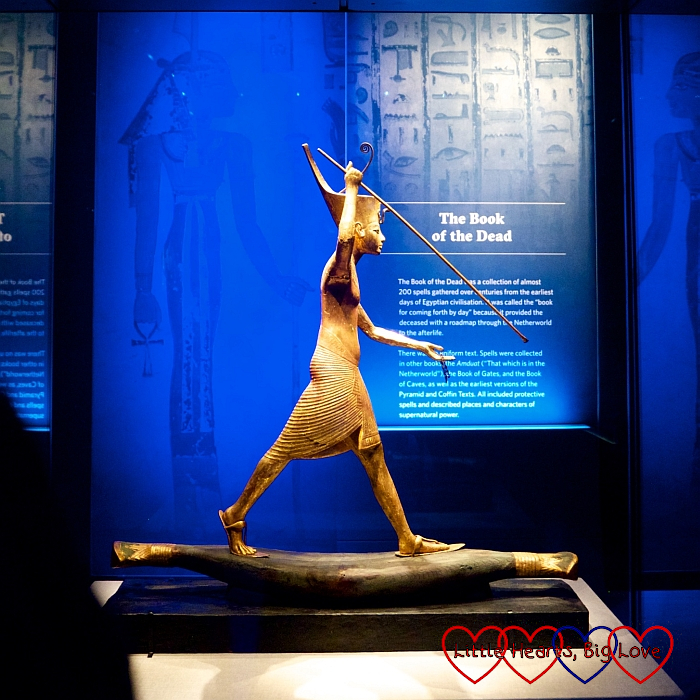
After the video, the exhibition takes you through several galleries, each focusing on different aspects of the journey through the afterlife, the preparations for the journey, and the history around Tutankhamun himself and the discovery of his tomb.
The objects placed in the tomb were designed to help the king on his journey through the underworld. He would need to use magic spells to protect himself along the way, and to help him pass through the dangers of the underworld. Each of the objects placed in the tomb had a purpose in the afterlife. They include shields, weapons, ships, statues of workers (one for each day of the year, with overseers and foremen for every week and month), furniture, food containers and even a pair of gloves.
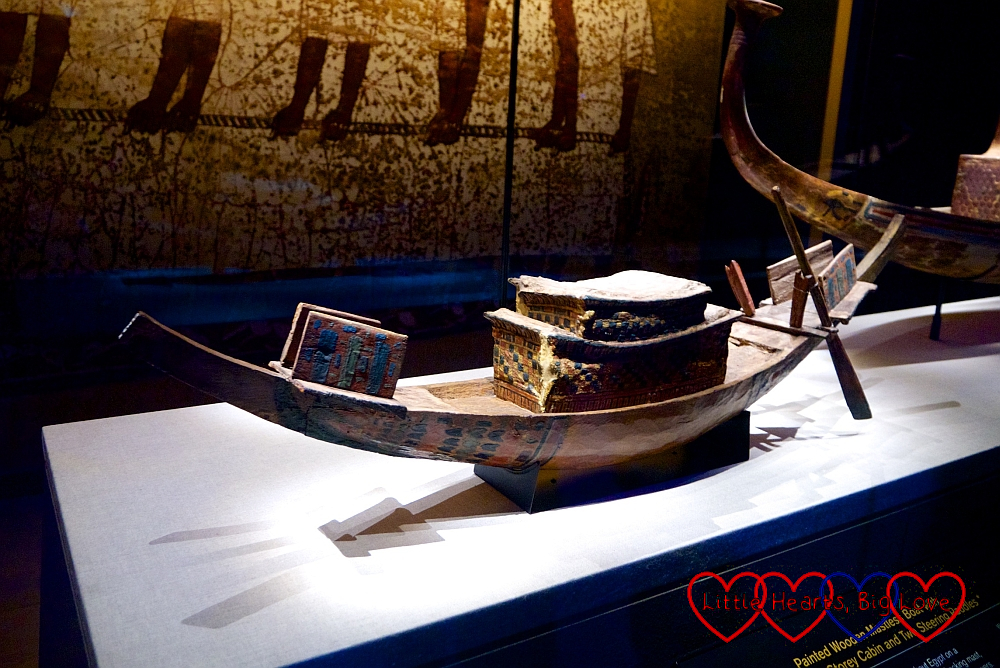
The famous gold and blue death mask is not on display in the exhibition. It no longer travels outside Egypt. The artefact that is shown on a lot of the publicity is a miniature canopic coffin. This was designed to hold the liver. During mummification, the stomach, intestines, liver and lungs were removed, embalmed, wrapped and placed in receptacles called canopicjars. These four organs were placed under the protection of four goddesses, each inscribed on the shrine.
What I found absolutely mind-blowing about the exhibition was the realisation that all of these artefacts are more than 3300 years old. The level of detail in the decoration of some of the items is absolutely amazing. The linen gloves in particular made me stop and look in awe at how well-preserved they are.
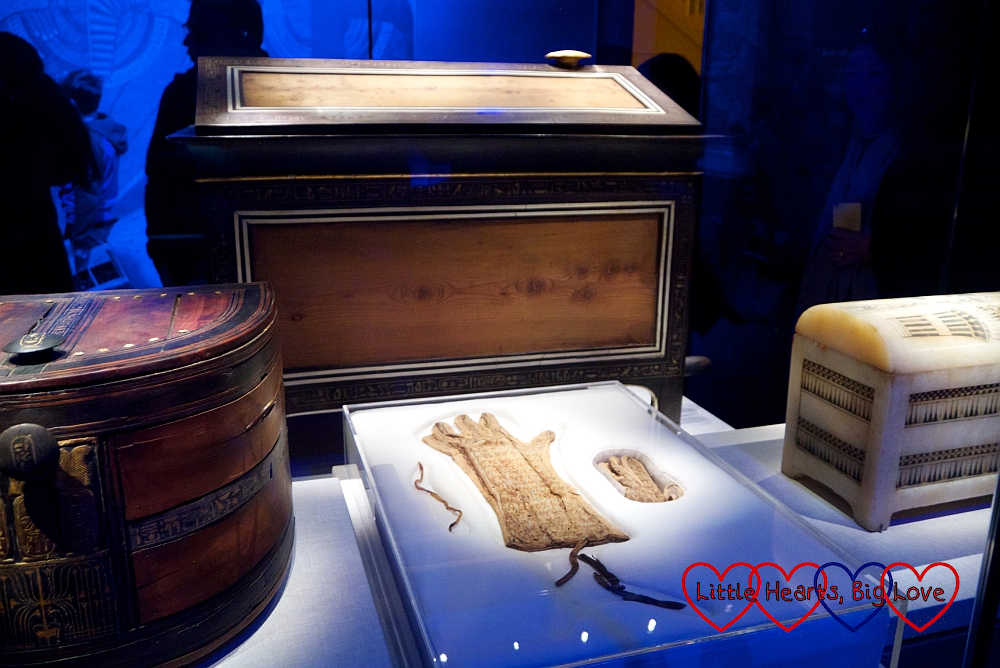
The audio guide gives some more detailed information about various artefacts on display. The visual information throughout has a good level of detail too. The audio guide is an extra cost and for me wasn’t an essential item. I enjoyed hearing the extra information on some of the exhibits; however I would have found the exhibition just as interesting and informative without it.

I wasn’t sure how much Sophie would enjoy the exhibition. At six, I thought she might be a little young for it, but she found it quite interesting to look at all the different artefacts on display. I wasn’t sure if all the information about death and the afterlife would trigger any grief about Jessica, or prompt any questions, but it hasn’t done so far. She was impressed by how old everything was though:
“These are all from a very long time ago. It was even before Grandma and Grandad were born!” she exclaimed.
She also enjoyed answering the questions and doing the activities in the children’s trail sheet along the way. Although she did enjoy the exhibition, I do think she was still a little young to understand much of it and that she would have enjoyed it more had she been a couple of years older.
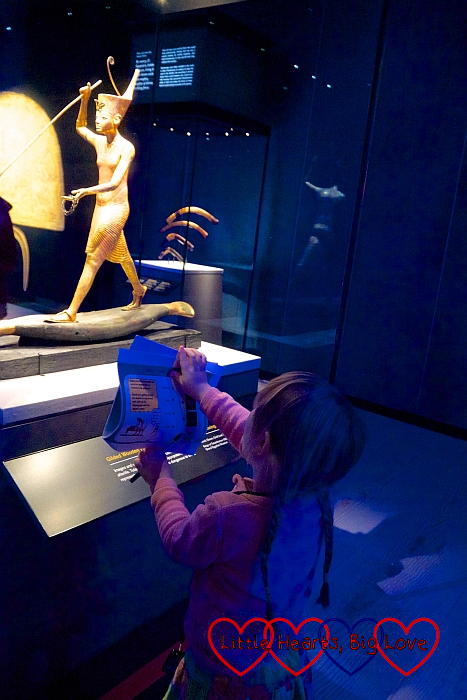
Entry to the exhibition is by timed ticket. Ticket prices start at £24.50 for an off-peak adult ticket and £16.50 for an off-peak child (under 16) ticket. Entry is free for children under 3. Pushchairs and prams are not allowed in the exhibition space, although can be left at the front entrance. This wasn’t a problem for us as we always use the carrier when travelling into London. It’s something to be aware of if you are planning to take small children though. Thomas was quite happy watching everything from the carrier. We did let him have a little wander in the final gallery, which contained a 10ft tall statue of Tutankhamun.
During the Christmas period, family passes are available from £70 (plus booking fee) when booked online in advance, or £80.50 from the box office. These are valid for the 9am timeslot on weekdays from Monday 16th December until Tuesday 31st December and include entry for 2 adults and 2 children or 1 adult and 3 children. There is limited availability for family passes, so it is advisable to book early to avoid disappointment.
The average length of time it takes to go through the exhibition is 60-90 minutes. We visited early in the day, before the exhibition opened to the public, and spent almost 90 minutes there. I didn’t listen to all the audio guide information in the time we spent there. If you’re someone who does like to listen to it in full, then I would allow a little longer.
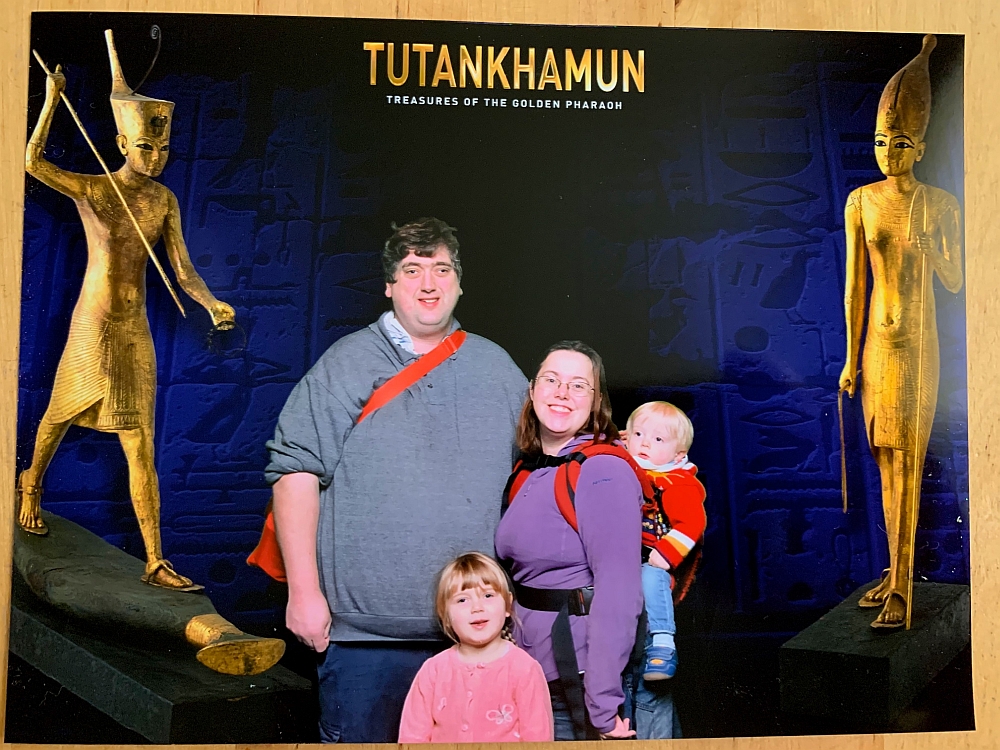
We thoroughly enjoyed our visit and were fascinated by all the artefacts on display. If you or your children are interested in Ancient Egypt, then I would definitely recommend visiting the exhibition before it finishes on 3 May 2020.
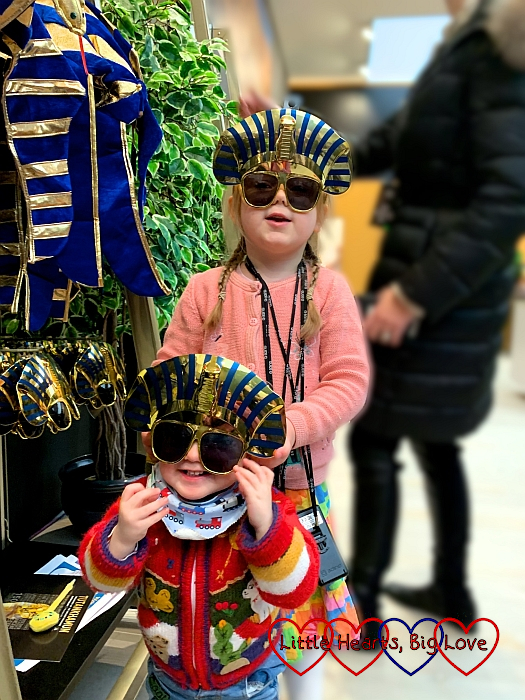
Visiting Tutankhamun: Treasures of the Golden Pharoah
Address
Saatchi Gallery,
Duke of York’s HQ,
King’s Rd,
Chelsea,
London SW3 4RY
Opening times:
Monday, Tuesday, Wednesday, Sunday – Open from 09:00 with last entry at 17:30
Thursday, Friday, Saturday – Open from 09:00 with last entry at 20:30
Closed on Christmas Day.
A timed entry system is in place, with tickets allocated every half hour. The gallery will close 90 minutes after last entry.
Tutankhamun: Treasures of the Golden Pharaoh presented by Viking Cruises runs at the Saatchi Gallery until 3 May, 2020. Tickets are on-sale now via www.tutankhamun-london.com and Family Holiday Passes are also available for a limited time only, where a family of 4 can visit from £70 + booking fees.

